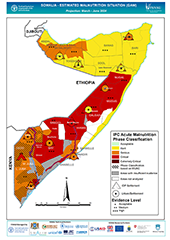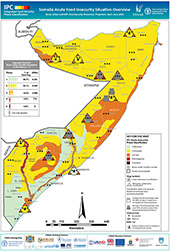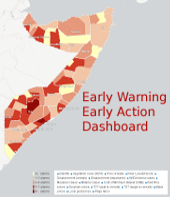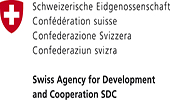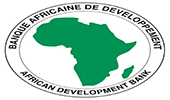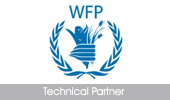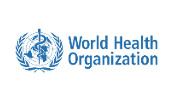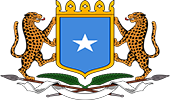Analytical Approach / Methodologies / Agriculture
Agriculture
FSNAU's Agriculture Analysis: Agricultural sector analysis and its contribution to livelihoods and food security is a major component of FSNAU's monitoring and analysis activities. FSNAU continually monitors the agriculture sector, including current situational analysis of crop cycles and performance, cereal prices and supply and agricultural labor activities as part of its early warning monitoring. The analysis is combined with FSNAU's Baseline Livelihoods Analysis to determine the impact of changes in agricultural sector on food and livelihood security. FSNAU agricultural sector analysis includes:-
- Annual Cereal Crop(Gu & Deyr) Statistics
- Annual Domestic Cereal Supply/Demand Balance Sheet
- Trend and Impact Analysis of Cereal Production, Cereal Prices and Market Supply, Agricultural wage rates and labor opportunities, and Terms of Trade.
Importance of Agriculture sector in Food and Livelihood Security
Agriculture is an important economic activity in Somalia not only in terms of meeting the food needs of the population (roughly 50% of populations cereal requirements are met through domestic production), but also in terms of generating income through crop sales and agricultural labor opportunities. Agriculture is a major component particularly for two of the main rural livelihood systems in Somalia:
- Agro-pastoralist - mix of agriculture and livestock production based livelihood
- Agriculturalist - agriculture based livelihood
Crop production performance and its potential is determined by the bi-modal rainfall in the mainly arid to semi-arid areas. The two main agricultural seasons are:
- Gu crop production, is from April to June and short,
- Deyr crop production is from October to December.
Two areas are considered high potential for crop production with rainfall ranging from 400mm to 600mm: a small area in the Northwest (west of Hargeisa) and a much larger inter-riverine area between the Shabelle and Juba river valleys.
There are four primary agricultural zones in Somalia:
- Northwest in parts of Awdal and W. Galbeed - rainfed maize and sorghum with some livestock herdings
- Coastal Cowpea Belt Zone in Central and Southern Somalia
- Shabelle and Juba Riverine Valleys - rainfed and irrigated maize, with sesame cash crops
- Sorghum Belt in Bay and Bakool Region - rainfed sorghum with livestock production
FSNAU's Agriculture Data
FSNAU conducts seasonal crop production surveys (1995-current) throughout the country. Crop production data is gathered from each crop-producing districts throughout Somalia and includes types of cereals planted, estimated acreage planted (HA) and production (MT). Cereal market prices (sorghum, maize and rice) and agricultural wage rates are collected weekly from 36 major markets throughout Somalia (1997-current). Cereal imports (MT) from Berbera and Bossaso Ports are collected from Port Authorities, while informal trade through non-official ports(e.g. El Ma'aan and Jazira) is tracked through WFP Mogadishu - FSNAU partner.
FSNAU Products from Agriculture Sector Analysis
- FSNAU's monthly Market Data Update (FSNAU/FEWSNET) provides cereal market price data trends. This monthly publication presents a compilation of graphical market analysis that FSNAU produces and regularly analyzes as part of its monitoring system. the data includes (sorghum, maize, rice) in retail (kg) and wholesale prices (50kg bag) collected in 36 markets from 1998-current.
- FSNAU's Monthly Food Security and Nutrition Brief includes monthly agricultural anlysis. This article presents a current situational analysis of the agriculture sector in Somalia-covering regional analysis of current seasonal agricultural activities and crop cycle, agricultural labor, wage rates, cereal prices, and terms of trade.
- District Crop Production Data Estimates for Gu and Deyr Seasons (1995-current). Crop production (MT), area (HA) and yield (MT/HA) estimates by season and district.
- Baseline livelihood analysis - crop production (MT) is converted from production per district to production per livelihood zone This is calculated based an estimated percentage contribution of the livelihood group to the total production in the district.
